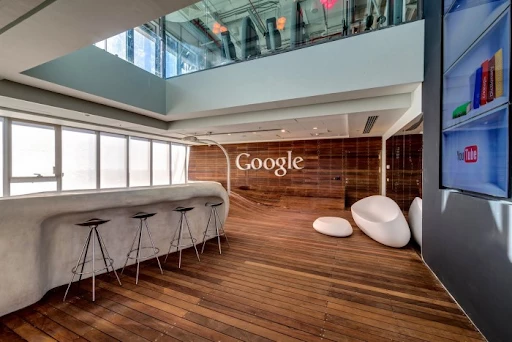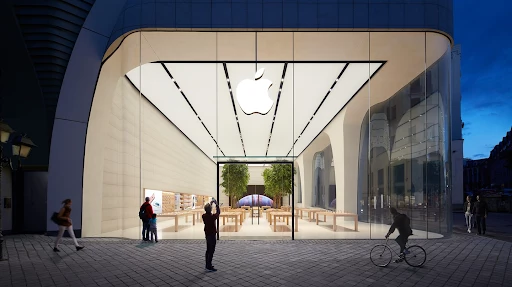When it comes to the interior construction design of a commercial building, it is important to consider the services of interior designers. These design professionals can help to create functional and aesthetically pleasing spaces that meet the needs of clients while staying within the project’s budget.
When you think about interior design, you must also think about workforce productivity. Work flow and positive spaces will have a significant impact on your team’s productivity. Interior designers will capture your business culture, people and function to develop spaces that energize.
In this blog post, we will provide an overview of the commercial interior construction design process, as well as tips for creating a successful interior space. We’ll also highlight important considerations when designing a space for businesses and feature case studies of recent projects that illustrate best practices.
What is Interior Construction Design?
Interior construction design involves the process of creating exciting work spaces as well as managing the design and construction of interior spaces. This can include designing functional space layouts, workflow that is sensical as well as the selecting of materials and finishes including specifying electrical outlets and lighting.
The creation of human spaces for work may seem secondary however it should be considered paramount. Consider a space that you worked that drained your sole versus a space you were energetically charged. Interior design architects are trained and skilled at creating the latter by concepting, specifying and coordinating the installation of flooring, doors, windows, and other interior elements.
What Services Do Interior Designers Offer?
designers offer a range of services that can help clients create functional and aesthetically pleasing spaces. Here are some of the key services that interior specialists offer:
- Design Conceptualization.
- Space Planning.
- Specifications and Finishes.
- Color Consultation.
- Selection of Artwork and Accessories.
- Custom Millwork and Cabinetry Design.
- Collaboration with Architects, Engineers, and Contractors.
- Project Management.
- Integration and Coordination of Services
- FF&E (Fixtures, Furniture, and Equipment)
- Data Infrastructure and Security Infrastructure
- Behind the scenes work
The Value of Working with an Interior Designer in a Commercial context
Working with a creative interior designer brings many benefits to interior construction projects. They play a critical role in the success of the project. Here are some of the key benefits that interior professionals bring to a commercial building:
Expertise in Interior Design
Interior designers have extensive knowledge and training in interior construction and can help clients create a vision for a commercial interior construction that meets the needs and preferences of clients. They bring a fresh perspective and innovative ideas to the table, incorporating natural elements, such as wood and stone, into their designs to create a unique and inviting space.
They will also have extensive knowledge of the market and industries, which contractor is reputable and how to make the most of any room.
Attention to Detail
an Interior designer is known for their due sense and attention to detail. They focus on every aspect of the design, from selecting the right flooring to ensuring that electrical outlets and lighting are in the right locations. This also helps the construction team in realizing the client’s intention.
Project Management software
an Interior designer play a critical role in project management. They work closely with key stakeholders, such as contractors, and project managers, to ensure that the build runs smoothly and that the interior construction job is completed on time and within budget. They use software to stay organized and manage timelines, resources, and budgets effectively.
Creativity and Innovation
an Interior designer bring creativity and innovation to every project. They use their expertise and knowledge of processes, technology and materials to create unique and innovative spaces that meet the needs and preferences of clients. They also use 3D renderings and other technologies to help clients visualize the final design and make informed decisions.
Integration of Various Components
Interior designers are skilled at integrating various components of interior design, including furniture, finishes, FF&E, data infrastructure, security infrastructure, and the structure of the rooms and the building itself. They collaborate with architects and other construction professionals to ensure that every aspect of the design is carefully considered and executed, resulting in a functional and aesthetically pleasing space that meets the needs of clients.
Cost Control
The interior designer also plays a key role in managing expenditure. They also help clients to make informed decisions about materials and finishes, balancing aesthetics with costs to provide a space that is both beautiful and functional.
The Projects Process
The design process in interior design involves several stages, from initial concept to final construction documentation. Here is a breakdown of the key stages
1. Conceptualization
The first stage of most projects is conceptualization. During this stage, the designer meets with the client to discuss the project’s goals, timeline, and costs. The designer will also gather information about the location and site context, such as the building’s structure, natural light, and views. Based on this information, the designer will create a preliminary design concept that meets the client’s needs and preferences.
2. Schematic Design
The next stage is schematic design. During this stage, the designer will refine the design concept, creating sketches and drawings that illustrate and support the overall design direction. The designer will also produce mood boards and material samples to help the client visualize the final design. The designer may also collaborate with other construction experts to ensure that the design is feasible and meets building codes and regulations.
3. Design Development
The design development stage involves further refining the design, taking into consideration feedback from the client and other stakeholders. The designer will produce, 3D renderings, and specifications that provide a clear picture of the final design. At some point during this stage, the designer will also finalize material selections, finishes, and fixtures as well as reflect on the cost of the project.
4. Construction Documentation
The final stage is construction documentation. The designer will produce detailed drawings, schedules, and specifications, using the latest drawing technology, that provide the necessary information for construction. The designer and contractor will also work with builders, and other professionals in the construction industry to ensure that the design is executed according to the design intent.
Key Considerations
Throughout the process, designers must consider and manage several key factors to ensure that the final design meets the needs and preferences of the client while also being functional and aesthetically pleasing. These factors include:
- User needs and preferences: The design must meet the needs and preferences of the end-users.
- Functionality: The design must be functional and practical, meeting the practical needs of the users.
- Site context: The design must complement the surrounding environment, taking into consideration factors such as light, views, and the building’s structure.
- Budget: The design must stay within the project’s budget, with expenditure managed carefully throughout projects
- Timeline: The design must be completed within the project’s timeline, with effective project management and communication.
Potential concerns
- Ignoring functionality: While it’s important to make a visually pleasing interior, it’s equally important to ensure that it meets the practical needs of the business or user. For example, a beautiful sofa may not be comfortable or functional for the intended users.
- Overlooking details: Overlooking details can also be a pitfall in interior design.
- Not considering the user experience: Another common pitfall is not considering the user experience. The interior needs to be designed with the end-user in mind, ensuring that it meets their needs and preferences.
- Over Capitalizing: Interior design can be expensive, and it’s easy spend too much if costs are not managed carefully.
- Not communicating effectively: Effective communication is essential in interior design. The designer needs to understand the needs and preferences of the client, and the client needs to understand what to expect.
- Ignoring the Location: The interior of a building needs to be designed to complement the surrounding environment, taking into consideration factors such as light, views, and the building’s structure.
- Choosing trendy over timeless: Choosing trendy design elements over timeless ones can result in an interior that looks outdated quickly.
Tips for a Successful Interior Construction Design Project
To create a successful project, it is essential to consider the following tips:
- Set Clear Goals: Determine the goals of the job including costs, timeline, and the desired outcome.
- Collaborate with Stakeholders: Engage with all stakeholders, including architects, engineers, and interior designers, to ensure that everyone is working toward the same vision.
- Consider the User Experience: a critical point, design the interior with the end-user in mind, ensuring that it meets their needs and preferences.
- Balance Aesthetics and Functionality: Create an interior that is both beautiful and functional, balancing aesthetics with the practical needs of the users.
Use Quality Materials: Choose quality materials and finishes that are both durable and aesthetically pleasing, to ensure the longevity of the project.
Case Studies
Case studies provide valuable insight into best practices for commercial interior construction design. Here are some examples along with a photo of each space for reference.
1) Google Office: The Google office in Tel Aviv, Israel, features a creative and functional design that incorporates elements, such as timber, and stone to create a unique and inviting interior. The space is designed to encourage collaboration and creativity, with open workspaces, cozy nooks, and playful design elements such as colorful paint and art.

2) Apple Store: The Apple store in Brussels, Belgium, is designed to reflect the sleek and modern aesthetic of the brand. The store features clean lines, minimalistic design elements, and large windows that allow light to flood the space.

3)Airbnb Office: The Airbnb office in San Francisco, California, is designed to reflect the company’s values of community, creativity, and sustainability. The space features an open and collaborative design, with natural elements, such as wood and greenery, incorporated throughout the space, bringing it to life.
Conclusion
Designing a commercial interior space is an exciting process, but it can also be daunting. With so many factors to consider and potential pitfalls to avoid, the project requires careful planning and attention to small things to achieve big success. In this blog post, we have provided an overview of interior design, highlighting the various stages of the design process and considerations to keep in mind. We have also provided tips for creating a successful project, emphasizing the importance of clear goals, collaboration with key stakeholders, and attention to user experience and functionality.
Finally, contact Level Engineering next time you decide to renovate your business interior.





